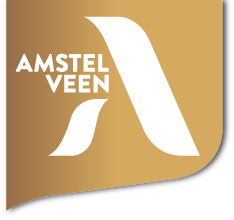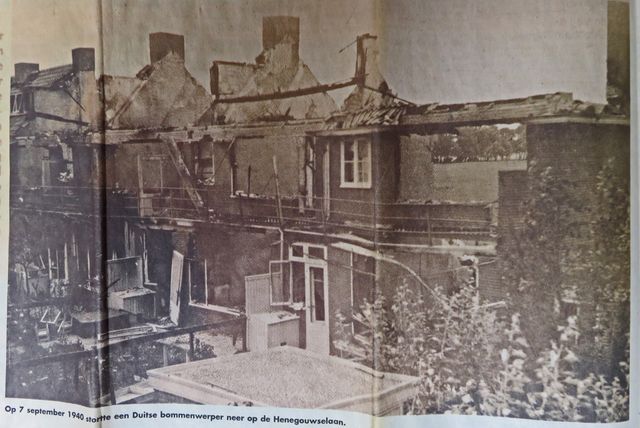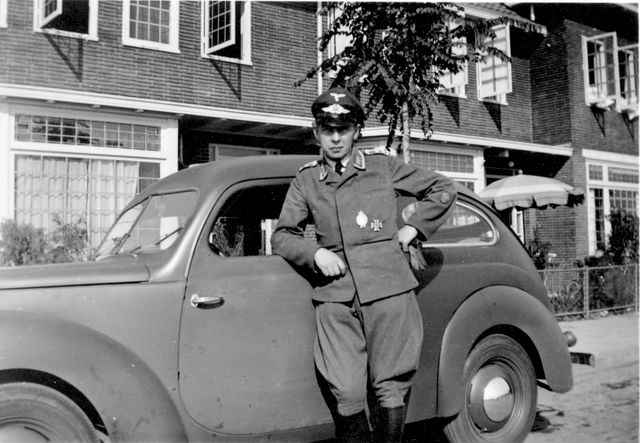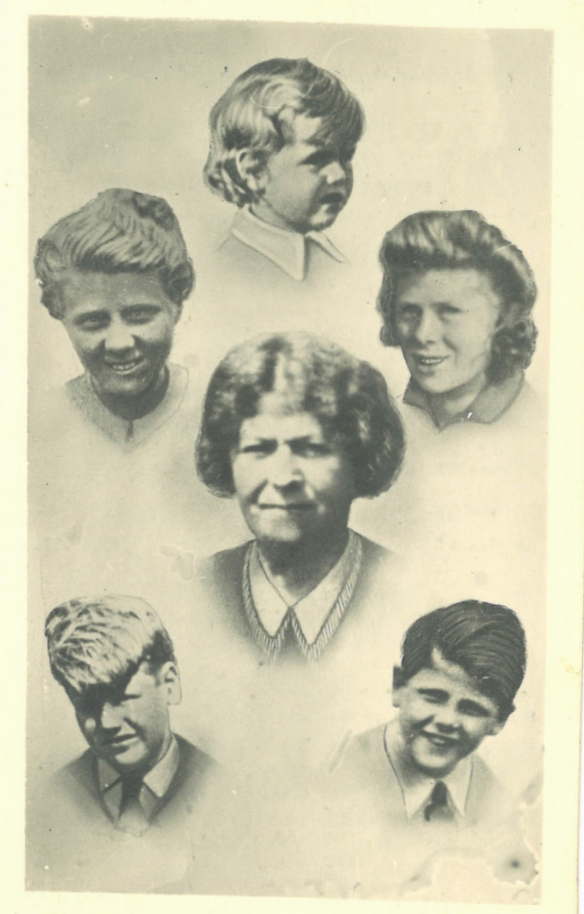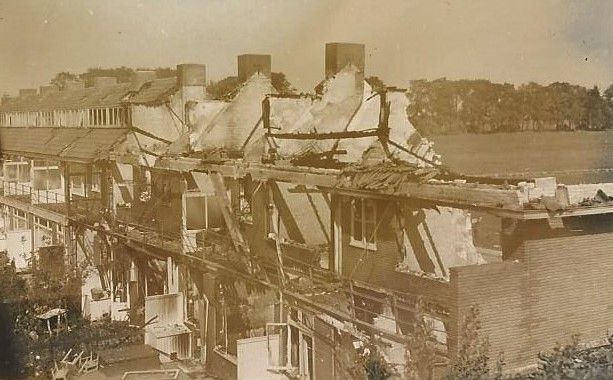
Panel 2 De Laagte
When you see the dyke at the end of the Henegouwselaan, it becomes clear why this part of Randwijck is known as 'De Laagte' (‘the lowland’). In the 19th century, peat was excavated here. Dried peat was a good fuel for Amsterdam's growing industry. The peat was transported via the Kalfjeslaan. Once the peat layer had been removed, the area was pumped dry and the polder was turned into farmland. Beyond the Henegouwselaan, there was still an open view of the fields for many years, where the southeast wind carried the sound of the train passing Abcoude.
Air disaster
In 1940, a disaster occurred on the Henegou…
When you see the dyke at the end of the Henegouwselaan, it becomes clear why this part of Randwijck is known as 'De Laagte' (‘the lowland’). In the 19th century, peat was excavated here. Dried peat was a good fuel for Amsterdam's growing industry. The peat was transported via the Kalfjeslaan. Once the peat layer had been removed, the area was pumped dry and the polder was turned into farmland. Beyond the Henegouwselaan, there was still an open view of the fields for many years, where the southeast wind carried the sound of the train passing Abcoude.
Air disaster
In 1940, a disaster occurred on the Henegouwselaan. German anti-aircraft guns were always searching the skies for enemy aircraft. In the early morning of 7 September, they hit their target — a bomber was shot down. However, it turned out to be a German aircraft that was on its way to Britain. The pilot tried to reach the Middelpolder, but came down on the Henegouwselaan. Many residents suffered burns in the resulting fire. In one house, the suffering was unimaginable. A mother and five of her children died there.
